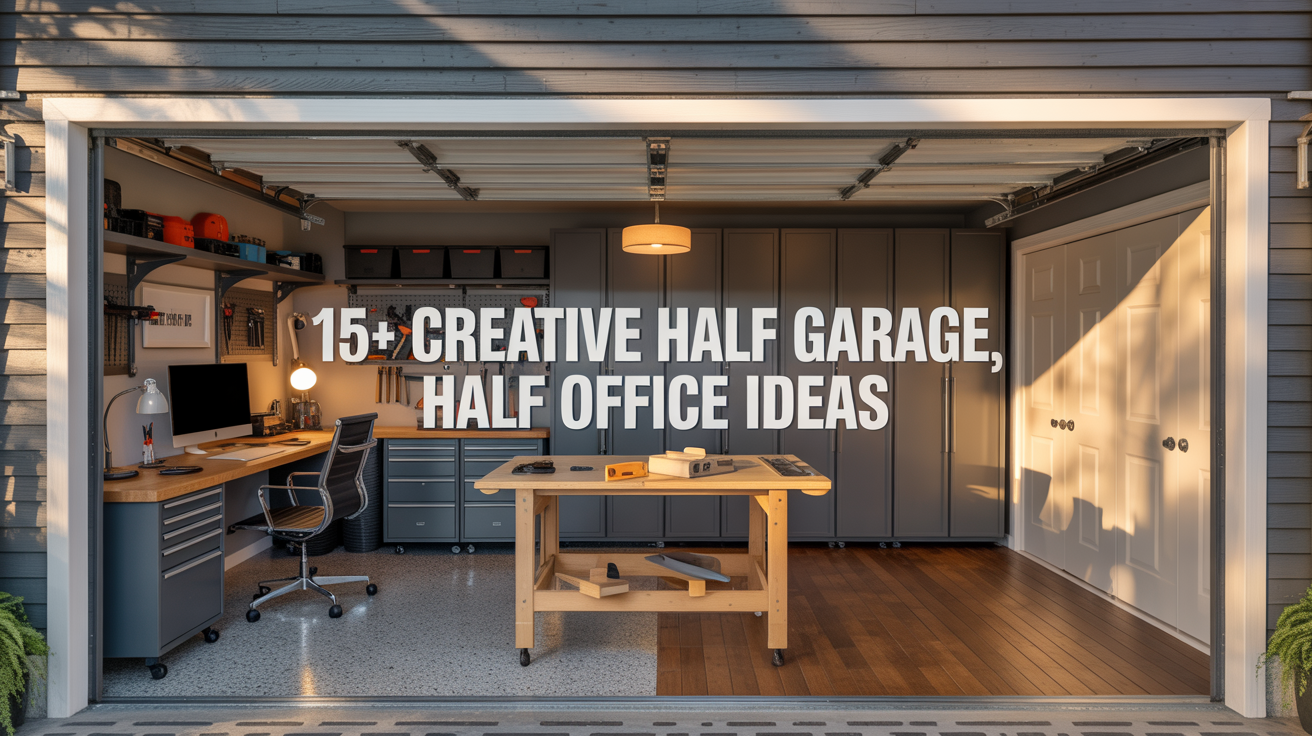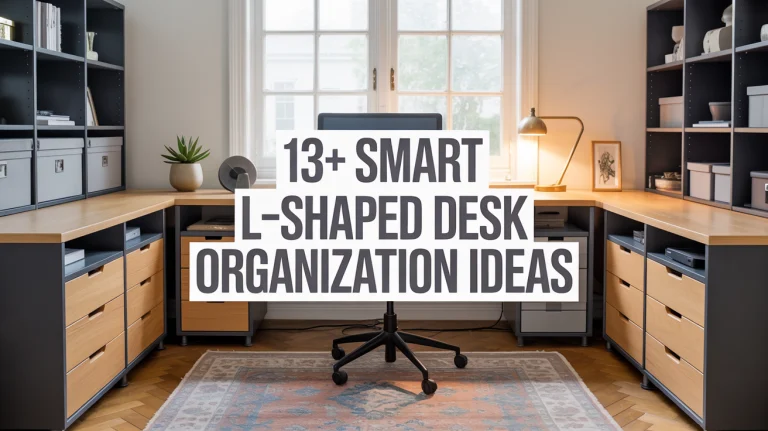15+ Creative Half Garage, Half Office Ideas

Turning part of a garage into an office can make your home work better. I’ve spent more than twenty years helping people fit real workspaces into tight spots. This article shows clear, simple ideas you can use right away. Each idea explains how to make the space quiet, bright, warm, and tidy. Read slowly and pick the ideas that match your work and your tools.
1. Soundproof One Side for Deep Work

If you need quiet, make the office side soft and sealed. Add a thick rug on the floor, dense curtains over windows, and soft wall panels. Fill gaps around the garage door with weatherstripping and seal cracks at the baseboard. A solid interior door that closes well keeps tools and car sounds out. These fixes lower noise a lot and let you focus longer without distraction.
2. Build a Raised Platform for Better View and Warmth

Raising the office floor by a few inches separates it visually from the garage. A raised platform can hide cables and ducts underneath. Add underfloor insulation to keep the space warmer in winter. The platform also gives the office a cozier feel and a clear boundary between work and storage without heavy construction.
3. Use Sliding Glass Panels to Keep Light and Privacy

Sliding glass panels give natural light while keeping noise out. Frosted or textured glass keeps privacy but still lets daylight pass. Install panels on a simple track so you can open the office to the garage on warm days. This solution makes the office feel larger and brighter without losing separation.
4. Create a Built-In Desk That Hides Tools

A desk built into the wall saves space and hides clutter. Design drawers and shallow cabinets under the desk to store office supplies and small tools. If you add vertical storage above the desk, use doors to hide it when you want a clean background for calls. Built-ins look tidy and last longer than free furniture.
5. Zone with Flooring Changes, Not Walls

Change the floor to mark the office area. Use wood or vinyl planks for the office and plain concrete for the garage. Different flooring tells the brain you left the workshop and entered a workspace. Flooring is a low-cost way to create a strong visual zone without building walls.
6. Add a Compact HVAC to Keep Temperature Steady

A small heat pump or mini-split keeps the office warm or cool all year. Garages often lack steady temperature, and that makes work harder. Mini-splits are efficient, quiet, and easy to mount on the wall. With steady temperature, electronics run better and you feel comfortable during long work hours.
7. Use Tall Cabinets That Double as a Divider

Tall cabinets placed between the garage and office create storage and a visual barrier. Cabinets on wheels let you move them when needed. Keep heavy tools on the garage side and office items on the other. This approach keeps dust away from paperwork while giving both sides practical storage.
8. Plan Electrical Outlets for Tools and Tech Separately

Separate circuits for the office and the garage prevent outages and make power safer. Put outlets where you will plug laptops, monitors, and printers, and separate outlets for tools and chargers. Think about placing USB outlets near the desk and heavy-duty outlets near tool zones. Proper planning cuts frustration and makes the space reliable.
9. Design a Small Meeting Nook with Folding Furniture

A tiny meeting nook helps when you need to meet a client or work with a partner. Use a fold-down table and stackable chairs that tuck away when not in use. Place the nook near a window or under a shelf to save room. This setup gives you a formal feel without taking large square footage.
10. Add Greenery to Improve Air and Mood

Plants clean the air and make a workspace feel calm. Choose low-care plants that tolerate bright light and temperature swings. Place a tall plant near the desk and small pots on shelves. Greenery lowers stress and helps you feel focused. It also softens the look of tools and metal surfaces in the garage.
11. Use Task Lighting and Dimmable Overhead Light

Good light matters more than fancy fixtures. Use a bright task lamp at your desk and a dimmable overhead light for the whole office. Dimming helps shift from focused work to relaxed reading. Daylight bulbs that match window light reduce eye strain. Proper lighting keeps you productive without glare on screens.
12. Install a Fold-Up Wall Bed for Quiet Overnight Work

If you sometimes work through the night or need a place to rest, a wall bed folds out of sight when not used. A small Murphy bed gives the office extra function for a guest or for you on long projects. When folded up, the bed becomes a flat wall that can hold shelves or artwork.
13. Make Cable Management a Priority

Loose cords look messy and trap dust. Use cable trays under the desk and cord clips along the wall. Label each cord so you can quickly find chargers or device cables. Good cable management keeps the space safer and gives your office a clean look for video calls.
14. Add a Small Sink for Quick Clean-Up

A corner sink helps when garage tasks get dusty or greasy. Use a compact sink with a cabinet below for cleaning supplies. The sink keeps tools and hands clean before you touch paperwork or keyboards. It also gives you a small break from work to wash your face and feel refreshed.
15. Use Flexible Storage for Seasonal Tools and Files

Choose storage that changes with your needs. Use plastic bins on labeled shelves for seasonal tools and movable file cabinets for office documents. When a season ends, swap bins to keep the office area tidy. Flexible storage helps you reuse the same space for different tasks without heavy remodeling.
16. Design a Quiet Break Corner for Short Rest

Short breaks boost focus. Create a small corner with a comfortable chair and soft lighting. Keep a small shelf for a book, a cup, and a plant. Even a five-minute rest in a separate spot helps you return to work with clearer thoughts. This corner keeps breaks from turning into long distractions.






